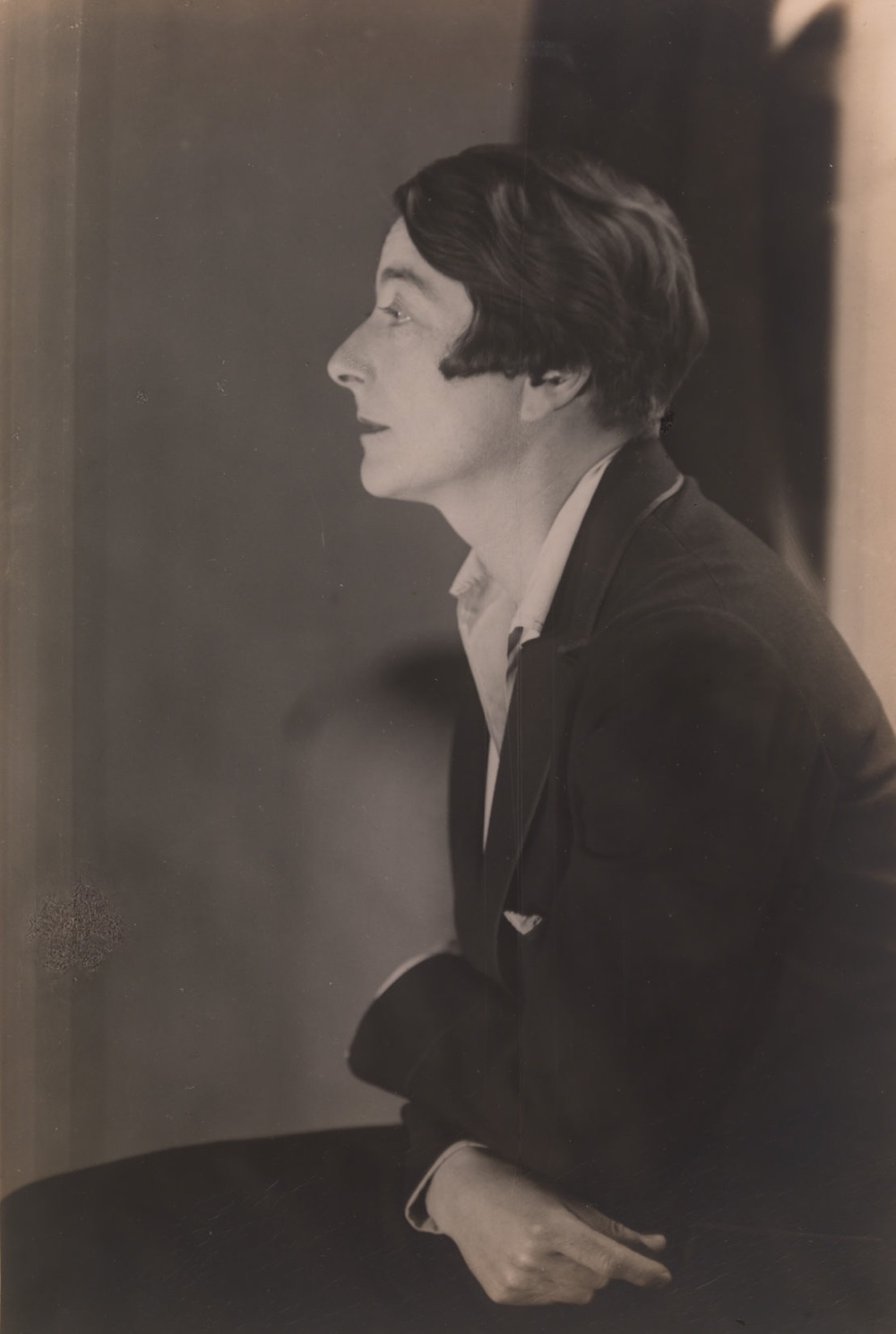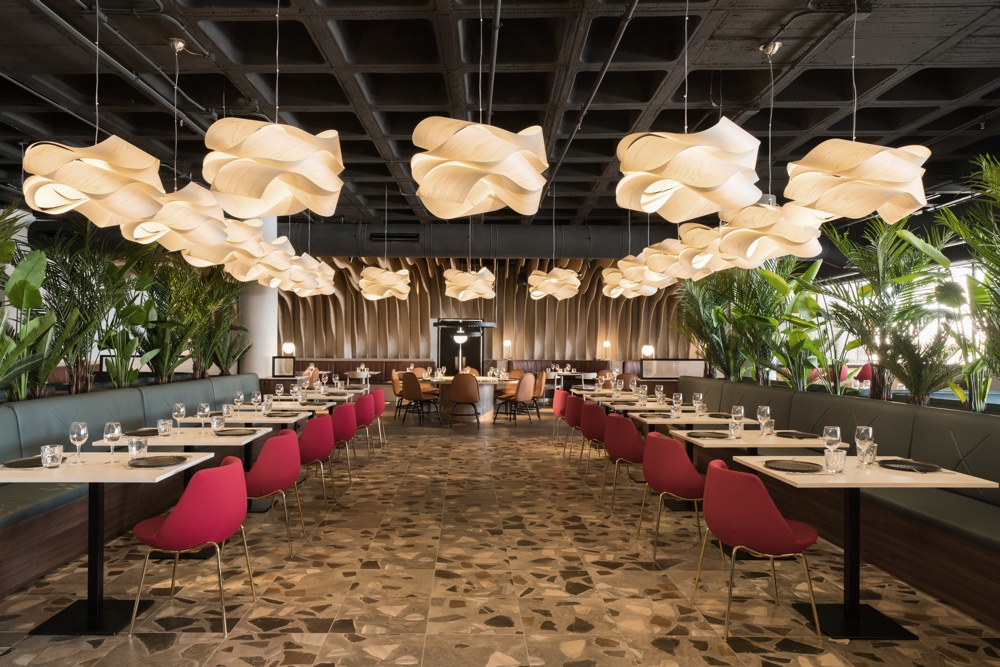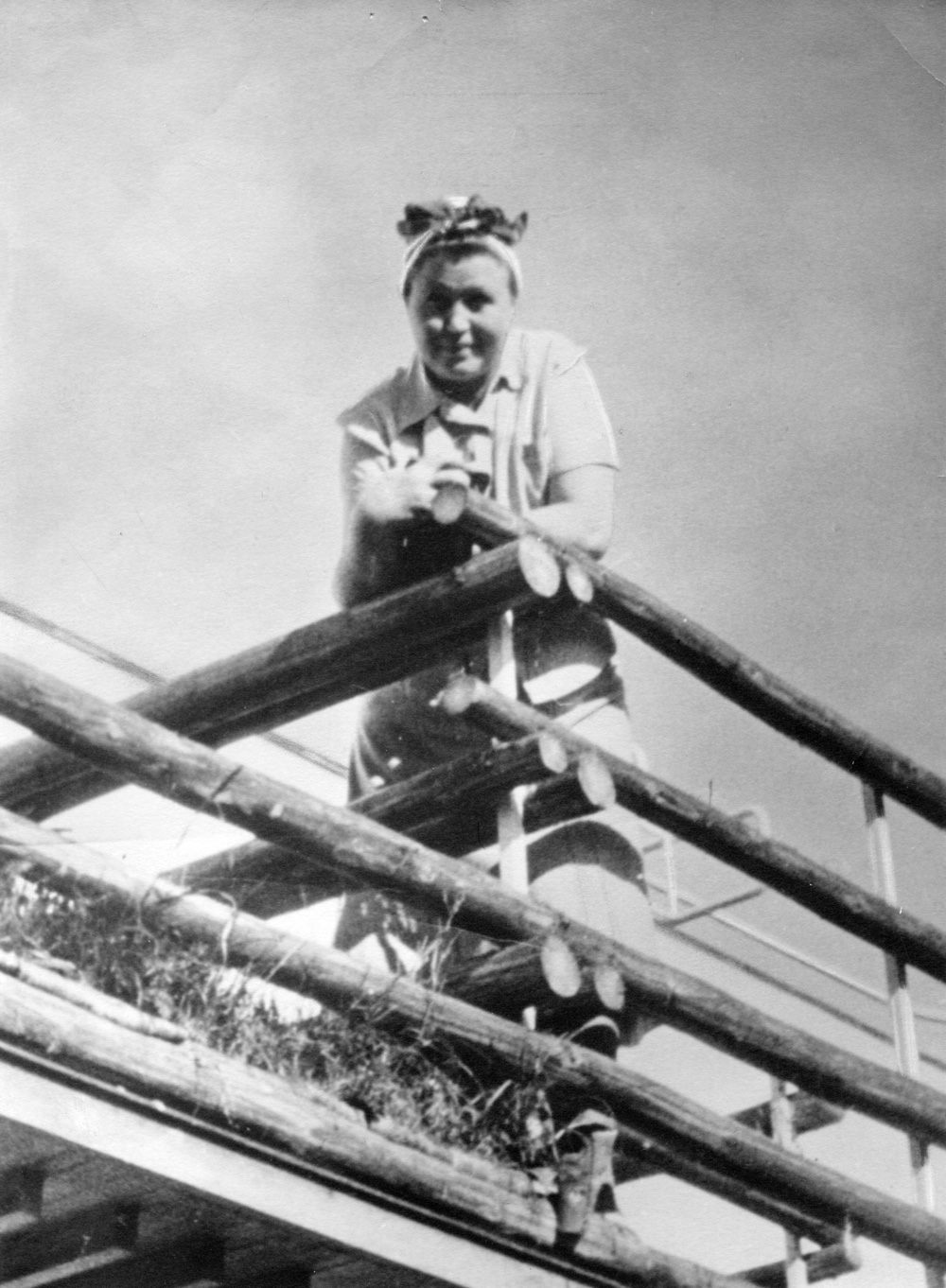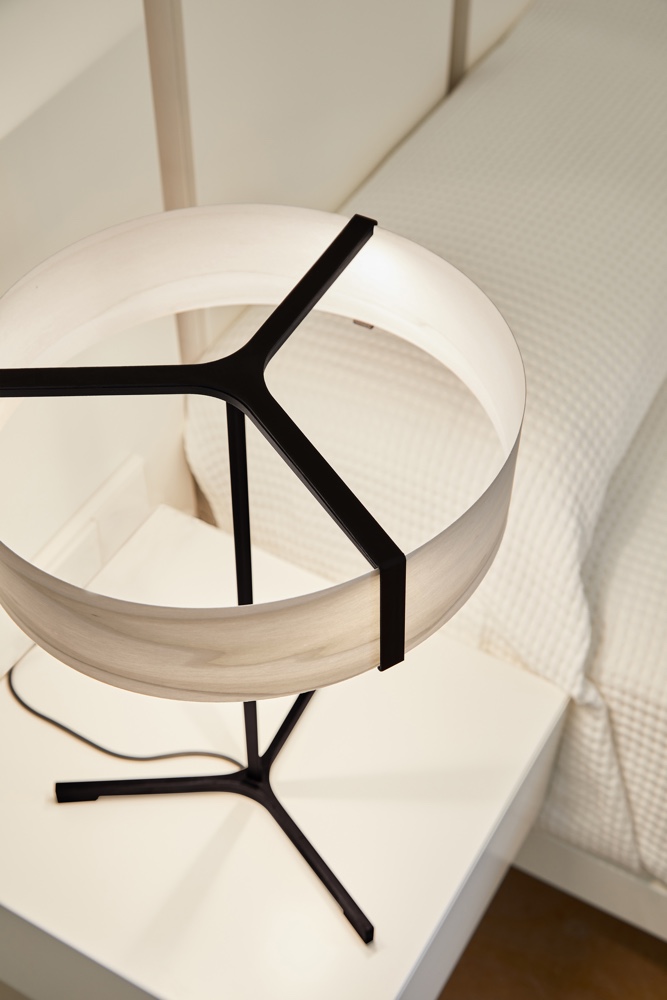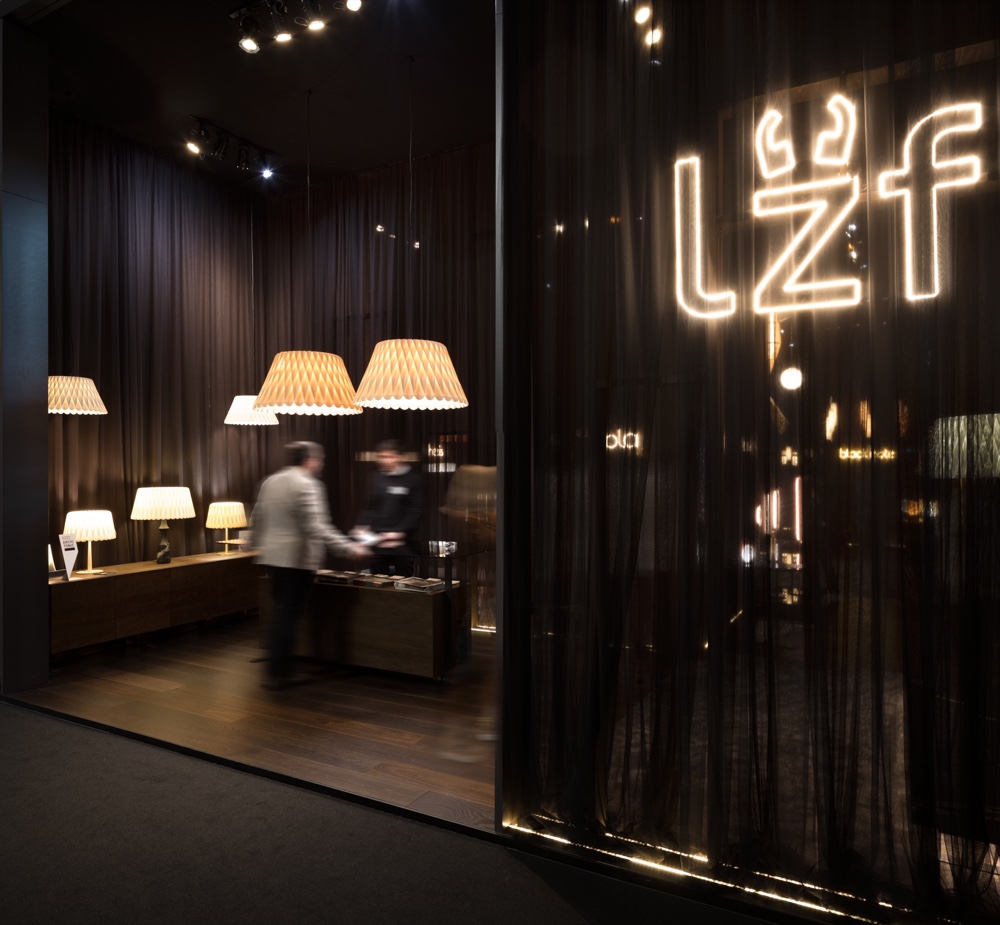When creating a workspace-based installation for 2015’s Workplace3.0 exhibition (an international biennial exhibit at Milan Design Week), celebrated Italian designer Michele De Lucchi remarked: ‘the office of the future should be visualised with the focus on lifestyles unfettered by convention, evolving spaces that perpetuate an endless stream of new ideas.’ His approach was certainly opportune and is one that remains highly relevant in a modern age of freelancing and co-working.

In this co-working space, LZF’s Domo lamps, designed by Rqr Studio, reflect light downwards—perfect for tasks—and the wood veneer diffuses light outwards, creating a warm ambience.

LZF’s Cervantes lamps, designed by Burkhard Dämmer, are most illuminating in this cafe setting.
Today, an increasing number of us have different expectations of the work environment, particularly as our attitude towards the workplace and employment is in a state of flux. With the rapid rise of technology and new media, twenty-first-century working practices often challenge the long-standing assumptions about how we work. Mobility is one pertinent factor: more of us expect to see flexibility and versatility in the workplace. We desire choice and the ability to work across a range of environments, including co-working spaces, at home, in public areas (such as museums and libraries) and cafes—with our laptops, smartphones and tablets, we can work just about anywhere. The idea of companies fettered by convention, with staid office environments and employees shackled to their desks is, slowly but surely, a dying phenomenon. Instead, more and more of us prefer to think of the workplace as transitioning, adaptable, dynamic and fresh. We typically seek spaces that encourage and enable the freedom to express our passion, artistry and expertise.

Barcelona-based imaginCafé offers a physical and virtual space, bringing together culture, education and technology. In the imaginCafé cafeteria, LZF’s Gea lights, designed by LZF co-founder Mariví Calvo, add a modest, smart and clean-cut aesthetic.

LZF’s majestic Koi, designed by Inocuo The Sign and LZF Lab, brings a surreal mix of fidelity and fantasy to the Mothership of Work co-working space in Helsinki.
The number of co-working spaces are growing exponentially, especially in larger towns and cities. Part of the sharing economy, they offer freelancers and entrepreneurs a shared and open platform from which to work. A co-working space can reduce the sense of isolation often experienced by people who work on a freelance basis. They have a certain nomadic charm, a community feel and a flexible attitude. Of course co-working spaces aren’t necessarily well suited to every individual—they can be expensive, noisy and, given their informal stance, somewhat unruly. Still, the co-working space is a viable option for anyone seeking a sense of freedom, a well-designed interior (typically, there is an emphasis placed on good design), access to meeting rooms and unlimited coffee. Increasingly, co-working spaces offer business and motivational workshops and seminars, social get-togethers, exhibitions, retail, gaming, a cafeteria, a gym and more. They are a key part of a revolution—a sea change—in how we work.

LZF’s Carambola lamp, designed by Oskar Cerezo, is both pleasing and serene in this home office setting.
Whether in a co-working space, a cafe or at home, the freedom and flexibility to approach work on our own terms can be extremely empowering. In many cases, we are likely to experience a positive effect on how we engage with work, and enjoy a renewal in our levels of creativity and productivity.

